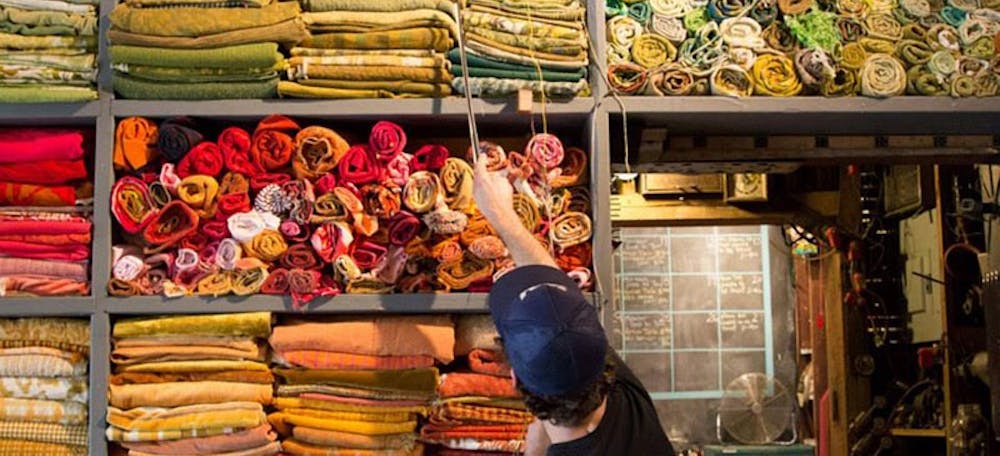Like the downtown areas of most minor metropolises, Greensboro’s Elm Street buildings have witnessed much of the past century, crumbling yet still steadfast amidst most of the city’s cultural offerings. Roughly a year ago, I found myself dining with several other students at the Mellow Mushroom on South Elm Street. We were attending a play for a non-majors acting class and had about an hour to spare. A friend in our group suggested we go to Elsewhere, a self-advertised “living museum” across the street.
As I return to Elsewhere a year later, I am at first intimidated by the eclectic group of characters just inside the combined two storefronts. One girl looks like she just stepped out of the storeroom at Vogue; another bearded fellow admittedly hasn’t seen the inside of his shower since Herman Cain; a third is gorgeous, though his or her gender is rather ambiguous. But these Bohemians are not nearly as eclectic as the innumerable museum pieces housed just inside this artist’s colony.
A built-in bookcase is nearly overflowing with what appears to be kid’s meal toys. A confessionary stands, years vacant, to the left. A library of books of varying literary value beckons to the right. Vintage spools of cloth drape down from above. At first one wonders if he or she has wandered into some collaboration of “Hoarders” and “Antiques Roadshow.” But there is a method, beauty and philosophy to the seeming madness.
The story begins during the Great Depression, when Joseph and Sylvia Gray founded the Carolina Sales Co. on South Elm Street in Greensboro. The business was focused on selling and acquiring various furniture and materials that could be reused for creative purposes. After the death of her husband in 1955, Sylvia began purchasing cloth and fabric supplies, in hopes of increasing her store’s revenue and keeping her business alive. For the next few decades, she would broaden her thrift shop’s inventory to include books, toys, houseware and an ever-increasing array of knick-knacks.
[quote]We are in a place that inspires people. It inspires curiosity and acts as a launching point. -- Valerie Wiseman, communication curator at Elsewhere[/quote]
Elsewhere’s documentarian, Lucia Carroll, described the shop and its gargantuan collection.
“This was her personal playground,” Carroll said. “These were her toys.”
The original store stayed in operation on South Elm Street until Gray’s death in 1997. Then, in 2003, the Grays’ grandson, George Scheer, visited his grandmother’s almost forgotten thrift shop. After discovering the immense collection entombed inside, Scheer joined with friends to excavate the property and chose to sell nothing. Elsewhere was founded a year later and in 2005 became an artist residency, focused on bringing artistic talent to Greensboro to utilize Sylvia Gray’s collection.
Elsewhere was soon awarded a grant from the United Arts Council of Greater Greensboro and today operates as a nonprofit organization consisting of the museum, residency program and its collaborative learning laboratory.
Elsewhere stands where it has for almost a century on 606 S. Elm St. The museum is open Wednesday-Saturday from 1-10 p.m. Regular admission costs one dollar and there are also a variety of membership opportunities. The workers and residents, who one may meet there, are extremely convivial and are usually more than willing to strike up a conversation with newfound friends.
The afternoon I returned to Elsewhere, I found myself chatting in the storefront window with Valerie Wiseman, Elsewhere’s communication curator. The front window of the street display was opened and the weather was warm for the first time in months. We sat inside what I believed to be a giant antique pedal car.
“We are in a place that inspires people,” Wiseman said. “It inspires curiosity and acts as a launching point. The objects act as a bit of a medium themselves, you know? I think that’s why it’s important. It’s a place for inspiration and it’s a place for people to think and, of course, it’s also a place that asks the public to reassess their assumptions about art and about individuals who are different or maybe just a bit eccentric, kind of like the space itself.”


